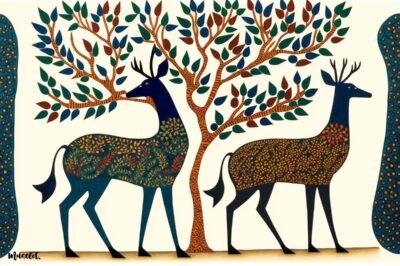Indian festivals have long been a source of inspiration for modern Indian art, influencing contemporary creators in unique and dynamic ways. From the vibrant colors of Holi to the intricate patterns of Diwali, festivals in India are deeply intertwined with the country’s artistic traditions. Today, these cultural celebrations are leaving their mark on Indian contemporary art, blending traditional motifs with modern aesthetics to create innovative expressions of creativity. Artists and designers are drawing on the visual richness of festivals to develop fresh trends in festival-inspired art and design, connecting past traditions with present-day artistic innovation.
The Fusion of Tradition and Modernity in Indian Art
Modern Indian art often draws from the country’s rich cultural heritage, and festivals provide a treasure trove of inspiration. Festivals such as Durga Puja, Ganesh Chaturthi, and Navratri, with their elaborate decorations and vivid imagery, serve as visual feasts for artists and designers. These celebrations inspire fusion art, where traditional elements such as rangoli patterns, temple architecture, and religious symbols are reimagined with a modern twist. For example, many contemporary artists use digital platforms to create artwork that merges traditional folk art with abstract and modernist styles.
This blend of tradition and modernity is also seen in interior design and fashion, where festive design inspiration from Indian festivals is used to create unique spaces and clothing collections. Whether it’s the intricate motifs inspired by mehndi designs or the vibrant hues of traditional saris, these elements are being incorporated into both fine art and commercial design.
Festival-Inspired Art in Contemporary Trends
In recent years, there has been a noticeable rise in festival-inspired art within the Indian contemporary art scene. Holi, the festival of colors, for instance, has become synonymous with artistic expression through its use of bold, bright colors. Contemporary artists often use the vibrancy of Holi as a metaphor for emotions, diversity, and cultural unity. Similarly, the grandeur of Durga Puja celebrations has influenced sculptural art, with many modern artists crafting installations that reflect the powerful imagery associated with Goddess Durga.
Art trends during festivals also extend to digital and performance arts. Many young artists are using festival themes in their digital illustrations, photography, and even virtual reality projects, expanding the boundaries of how Indian festivals can be represented in the digital age. Street art and murals are another medium where festival-inspired designs are becoming popular, showcasing India’s artistic talent and its deep connection to cultural celebrations.
Festivals as a Source of Design Innovation
Festivals not only inspire artwork but also serve as a major source of festive design inspiration in product design, packaging, and fashion. Designers look to festivals for ideas that incorporate traditional Indian aesthetics into modern products. This is evident in the growing trend of festive-themed home décor, where elements from Indian festivals, such as diyas, floral garlands, and mandala designs, are translated into modern, minimalist pieces suitable for contemporary homes.
Even fashion designers are drawing from the vibrancy of Indian festivals to create fusion art in their collections. Whether it’s through the use of bold fabrics, traditional weaves, or festive color palettes, Indian festivals provide endless creative inspiration.
Conclusion: Celebrating Art Through Festivals
The influence of Indian festivals on modern Indian art is undeniable, with artists and designers continuing to find inspiration in these vibrant cultural events. Whether through fine art, digital platforms, or fashion, the fusion of traditional and contemporary elements is reshaping the landscape of Indian contemporary art. Festivals are not only a celebration of culture but also a driving force behind some of the most exciting art trends during festivals today, showcasing the limitless creativity that stems from India’s rich heritage.








Leave a Reply